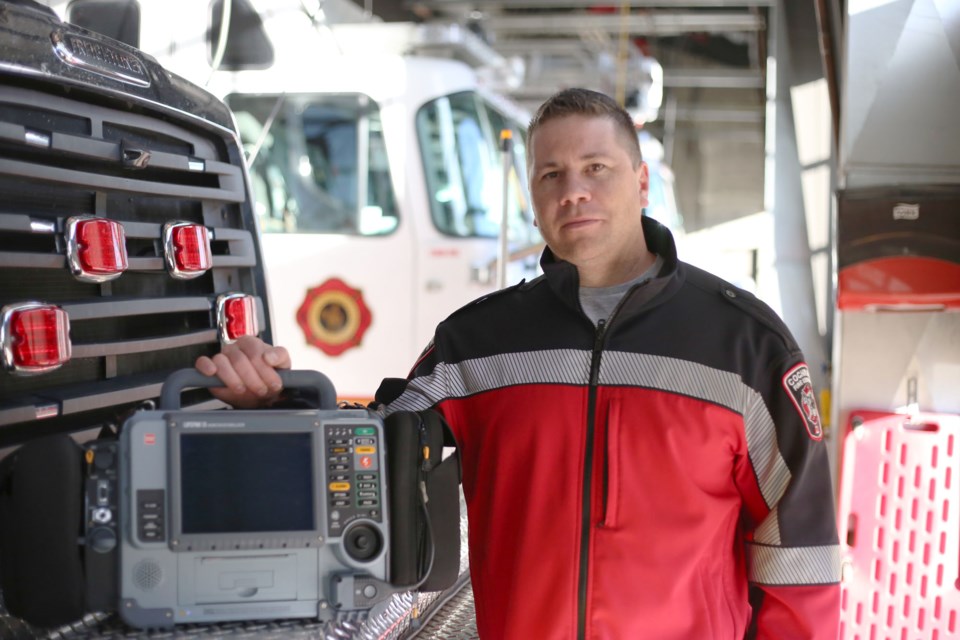COCHRANE— Cochrane Fire Services has recently acquired a new piece of life-saving equipment to be carried on fire engines responding to emergency calls.
The equipment that the new monitor/defibrillator is replacing is nearly 20 years old said Chris Chyka, Lieutenant of training with the Cochrane Fire Services.
The all-in-one monitor/defibrillator Lifepak 15 is a top of the line piece of equipment that helps first responders monitor patients and intervene in emergency situations.
Chyka explained the new equipment will allow fire service members to elevate their level of care and provide life-saving measures if EMS is not immediately on scene.
He noted that there are days where the ambulances are often out for several hours at a time without returning to the station.
“I don’t think it’s any secret that AHS’ call volumes are high and they’re busy all the time,” he said. “As you can see, this is a spare ambulance and this is a transfer ambulance, but the two front line trucks, they’re already gone. It’s in the morning, they’re out doing calls and we might not see them until 6 or 8 at night when they do shift change.”
Often times EMS is right behind Fire Services, and wait times are only a few seconds, but Chyka said he has seen wait times of up to 20 minutes on especially busy days.
The updated equipment enhances the care Fire Services members can deploy if they find themselves the first ones on a scene, he said. It will also help Fire Services members shift patient care to EMS, as they will already have a good picture of what is going on with a patient.
“This is where this thing really comes in handy— Things like chest pain, people who had a fainting episode. We can interpret what a heart rhythm looks like and go, ‘OK, this is what we think is going on.’ Our treatment modality is limited, because again, level of training and what type of equipment we carry on the actual fire trucks, but this gives us an idea and we can help seamlessly transition that patient over to EMS,” he said.
In certain situations, like a heart attack, immediate intervention is critical to patient outcomes.
In trauma situations, paramedics operate under a principle called the Golden Hour. It is a principle that indicates patient outcomes improve when the administration of definitive medical care is given as soon as possible.
Similarly, in cardiac events, during which the new monitor will be deployed, time is of the essence, Chyka said.
“Time is muscle in cardiac related events. As the minutes tick away, and parts of the heart aren’t getting oxygenated blood, that never regenerates. Time is muscle and we don’t want to lose that muscle,” he said.
Cochrane Fire Services has chosen to lease and not buy the new monitor, which leaves it flexible to upgrade if new technology becomes available in the future, Chyka added.
“As we continually amend or keep our first response bylaw up to date, especially when it comes to pre-hospital care or medical response, this situates us nicely because it’s the latest technology that’s out there, keeping in mind that is an older machine, and there’s something new coming out,” he said. “To keep up with those technology jumps, we’ve chosen to lease with technology upgrades and that way we’re prepped. If we change our level of service agreement to provide a higher standard of care we don’t have to upgrade any equipment, it’s there already for us.”




